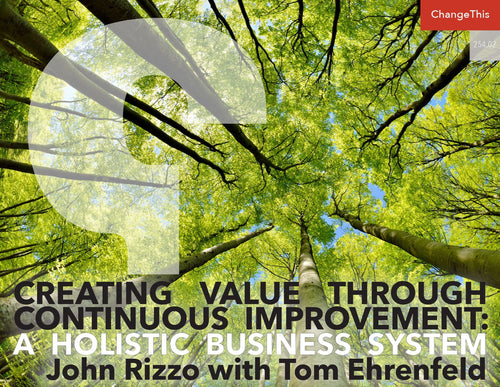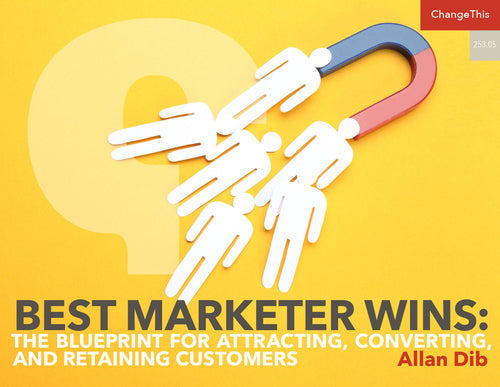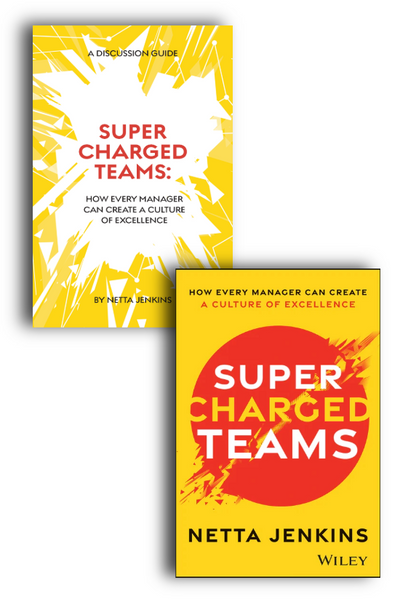Trust delivers results. Being vulnerable helps.

Trust is deepened in moments of vulnerability–even in business.
Customers believe the software they download from a trusted organization will be safe. When they download software, they are making themselves vulnerable (to malware, hacking or unwanted apps)—but trust, driven by previous experience, makes this choice more straightforward. Workers trust that their relationship with their organization means they’ll be respected and appreciated in addition to being paid. They make themselves vulnerable psychologically and financially to their bosses because they trust the organization to act in their interests as well as its own.
Vulnerability is rarely lauded as an important business value. Most organizations and leaders seek to reduce vulnerability through contracts, detailed terms and conditions, and other processes and legal vehicles for ensuring target outcomes are met. The less we trust, the less we are willing to make ourselves vulnerable, the more legal replacements we need and the more complicated our lives become. But vulnerability can be a powerful pathway to build trust—and as every business leader knows, trust matters.
Deloitte’s research shows that customers who highly trust a brand are 88% more likely to buy from that brand again—and 62% will buy almost exclusively from their trusted brand. Seventy-nine percent of employees who highly trust their employer feel motivated to work (versus just 29% who said they feel motivated when they don’t trust), and the majority of highly trusting employees (71%) aren’t actively seeking other employment opportunities.
So why do many business leaders treat vulnerability as if it is a liability? We believe its strong tie to trust means that in the right places and ways, vulnerability is actually a benefit— one that can enhance business value and strengthen relationships between brands, customers, employees and company partners.
In 2020 we set out to test this and other beliefs about trust. From our work we’ve developed a powerful new methodology to measure, predict and take action to build trust, called HX TrustIDTM. Along the way, we learned plenty about the role of trust in elevating the human experience (HX) and driving business value. And we identified the important role that vulnerability can play in increasing trust.
We believe the question for leaders who want to build trust is: What can be gained when businesses and their leaders make themselves vulnerable? And, importantly, what drives people’s willingness to make themselves vulnerable?
Before we answer those questions, let’s look at what’s at stake.
A NEW FRAMEWORK FOR MEASURING, PREDICTING AND FOSTERING TRUST.
Much of what has been written previously about trust looks through a rearview mirror to help explain why trust broke down. This makes sense because as leaders we don’t often think about trust until we have a breakdown in trust. But we wanted to help organizations build up trust as they move forward.
Since embarking on this effort in 2020, we’ve surveyed approximately 200,000 customers and employees across nearly 500 brands in over 10 industries. We conducted almost two dozen in-depth interviews with trust experts, as well as in-depth focus groups with 50 employees. And we’ve worked with leading companies and executives across industries to both study trust and activate their organizations to build trust.
Here is how we have come to define trust, based on our research: Trust is the promise of a meaningful, mutually beneficial relationship between two or more people. At a fundamental level, trust is what happens, or doesn’t, between people and between organizations made up of people.
We trust a friend to consider our interests, treat us fairly and offer respect—behaviors that honor our humanity. We trust an organization to deliver its promised products or services— we call this capability. We trust someone at work to be straightforward and honest, which means valuing transparency. And we trust the products we use will work as well today as they did yesterday, a kind of trust driven by reliability.
We call humanity, transparency, capability and reliability “the Four Factors of Trust.” In our research, the Four Factors describe nearly all of the variation we see in stated trust scores—79%—and they are highly predictive of behavior. For example, when a company scores high on reliability, customers are 380% more likely to spend more on the brand vs. with competitors. Breaking trust down into the Four Factors and measuring performance against each of those factors (separately and in aggregate) makes it possible for us to help organizations elevate the human experience.
We call it the HX TrustID.
THE BUSINESS VALUE OF TRUST.
As we anticipated, organizations with high composite HX TrustID scores outperform their peers. By a wide margin. Specifically, those organizations outperform their peers by up to four times in terms of total market value. In addition, our model shows that when organizations across industries move their composite customer HX TrustID score by one point—say, from 40 to 41—they amplify their expected shareholder return by 4%. The value of trust is even greater in certain industries. For example, in the financial services sector, shareholder return grows by 22%. Furthermore, these expected returns only grow as trust grows. If a company moves its score from a higher 60 to 61, its expected shareholder return increases by 6%.
The Four Factors—individually and together—are also highly descriptive of human behavior. On average, customers are 2.5 times more likely to perform positive behaviors—such as defending or promoting the brand, choosing the brand, purchasing more, spending more—when they rate the Four Factors highly.
Predicting behavior to this degree is significant because it enables us to understand how to lead with the kind of behaviors that build trust and elevate experience. We can also quantify the impact of that behavior change. For example, across all of the industries we studied, when an organization is able to move a customer’s humanity score from neutral to high, the customer is nearly twice as likely to defend the brand against criticism and 1.8x more likely to promote the brand on social media. When the same happens with capability, the customer is nearly 3x more likely to choose the brand versus its competition.
And while the relative importance of the factors may differ among industries, the Four Factors themselves remain consistent across industries and across stakeholders—customers, workforce, partners. Based on our research and Deloitte Digital client experience, we can say with confidence that the Four Factors are the primary drivers of trust.
WHERE DOES VULNERABILITY FIT IN?
You’ll notice that vulnerability is not listed among the Four Factors. That’s because we found that the four factors are the foundation upon which trust is built—whereas vulnerability serves to deepen existing trust. Think of it this way: We do not choose to trust because we are vulnerable; rather, we choose to be vulnerable because we trust. When a brand exposes itself by sharing information that is often withheld in its industry (or by businesses generally), it signals that the brand trusts its employees and the consumer to make a fair comparison with competitors. Consumers appreciate this show of vulnerability—and reward it with a greater level of trust in the brand.
As a business, you show vulnerability primarily by being transparent. To illustrate, here are a couple real-world examples.
In 2009, restaurant chain Domino’s Pizza was struggling. In a survey of consumer taste preferences among national chains, the company’s pizza came in tied for dead last.1 The company’s stock price had shed more than 80% of its value in less than two years.2
The company announced a risky move: It would completely rebuild its pizza—new crust, new sauce, new cheese.3 At the same time, it started actively soliciting customer feedback through its Pizza Tracker app and asking customers to “show us your pizza” by uploading photos. The feedback was then featured, largely uncensored, in national TV ads and on a Times Square video billboard.4
“Worst excuse for pizza I’ve ever had” might not sound like the ideal message to rebuild a slumping brand. But by welcoming and sharing criticism, acknowledging problems and promising changes, the company built buzz around its transformation through radical vulnerability and transparency.
The company’s bet paid off. If you’d purchased $100 worth of Domino’s stock on the day that new pizza was unveiled in December 2009, those shares would now be worth more than $4,400.5 (By comparison, that same $100 invested in the S&P 500 at the end of 2009 would be worth less than $400 today.6) And still to this day, Domino’s Pizza’s transparency score remains 16% higher than the average in its industry.
Another, more recent example of vulnerability and transparency bears mentioning. In 2020 as the COVID-19 pandemic was wreaking havoc on the travel and hospitality industries, Marriott International President and CEO Arne Sorenson sent a video message to all his company’s associates—and he didn’t sugarcoat it either. “Here are the facts: COVID-19 is having a more severe and sudden financial impact on our business than 9/11 and the 2009 financial crisis combined,” Sorenson said. “In most markets our business is already running 75% below normal levels.”
Before listing drastic cuts in the business, Sorenson announced he would not take a salary in 2020 and the executive team would take a 50% cut in pay. His voice trembling in the video, he said, “There is simply nothing worse than telling highly valued associates—people who are the very heart of this organization—their roles are being impacted by events completely outside of their control.”
And in an extraordinary sign of personal vulnerability, Sorenson admitted his team was anxious about him appearing “in my new, bald look.” (He was undergoing treatment for pancreatic cancer as the pandemic began and died at age 62 less than a year later.)
It takes strong, empathetic leadership to give tough messages in plain language. But it makes a big—positive—difference when it comes to trust: We found that Marriott’s transparency score is 66% higher than the average in its industry.
MINING THE MISSING ELEMENT IN TRUST.
As companies like Domino’s and Marriott have shown, transparency has an important role in building trust and enhancing business value—and vulnerability can be an important signal of that transparency. Vulnerability also has a role in other factors of trust—particularly humanity. Nurses, for example, are the most trusted profession—and have been for years. This is largely because they are trained to be transparent and open, and to feel and show human compassion for their patients. When a nurse cries in our room or tells us about his or her own past health scares, that vulnerability signals both humanity and transparency. But empathetic vulnerability to the experiences of others will do little to build trust unless you show it—and that depends on a commitment to transparency.
Interestingly, transparency alone doesn’t make a brand trusted, but we found that it is often the “missing element” that vaults a brand to the top of the trust scale in its industry. We’ve seen this with a diverse range of organizations including Disney Cruise Line, Cleveland Clinic, USAA and Lexus.
When an organization exhibits a high degree of transparency, a customer is almost two times more likely to promote the brand on social media, and a worker is one and a half times more likely to positively review an employer on a public website (such as Glassdoor or Fishbowl).
Key actions to take that increase a sense of transparency include:
- Ensure that marketing and communications are clear, accurate and honest—even when that honesty is painful or embarrassing. Lean into transparency in crisis communications. In workforce communications, admit what you don’t know as well as what you do know.
- Be upfront about how you make and spend money from interactions of all kinds.
- ommunicate how and why personal data is used in plain and easy-to-understand language, and make that information easy to find on websites and in retail locations.
- Make sure you’re sharing the information that is relevant in a consumable way. Be clear and upfront about fees and costs of products, services and experiences, especially add-ons and tiered product lines. For example, offer a visual checkbox of features between economy and premium versions of a product.
- Make sure that you’re sharing the appropriate level of detail for your audience. Customers, employees, partners or even shareholders don’t necessarily need every nitty-gritty detail about everything you do—they just want what helps them make a good choice at the appropriate moment. Think about dining at a farm-to-table restaurant. You appreciate knowing that the pork is locally sourced, and even knowing a bit about the farmer. But you probably don’t need or want to see pictures of the butchering process or know the pig’s name.
TO GROW AND PROSPER, GIVE AND TAKE.
A one-way mirror isn’t transparent. In the same sense, one-way expectations of transparency and vulnerability can’t foster real trust. Many businesses expect customers and employees to be transparent and vulnerable to them—yet scoff at the idea of being transparent and vulnerable in return. This creates an imbalance that ultimately limits or erodes trust. Remember our definition: Trust is the promise of a meaningful, mutually beneficial relationship between two or more people. That means a give and take, in equal measure.
Want customers to believe your car is the safest on the market? Show them the ways that you’re testing and improving safety systems—and make sure you’re always the first to report and proactively address safety issues, rather than waiting for regulators or whistleblowers to call out problems. Want employees to buy into your restructuring plan? Share and acknowledge not only the benefits you foresee but also the hard choices that you’ve had to make, the reasons for those choices and the sacrifices that they and you will need to make for the plan to pay off.
By showing vulnerability you signal transparency. By signaling transparency, you build trust. By building trust, you drive better business outcomes. And perhaps more important, you help make the world a place we all want to live in.
Adapted from The Four Factors of Trust.
Copyright © 2023 by John Wiley & Sons.
All rights reserved.
ABOUT THE AUTHORS
Ashley Reichheld, a Principal at Deloitte Digital, works with clients across industries to help them to reimagine their brands and experiences. Building trust is the greatest opportunity for competitive advantage. So Ashley created HX TrustID™ –a groundbreaking tool to help companies measure, predict, and build trust with their customers, workforce, and partners.
Amelia Dunlop, Chief Experience Officer at Deloitte Digital, helps organizations solve their toughest problems using human-equitycentered design to build empathy and trust with customers, workers, and partners. She is the author of The Wall Street Journal bestseller, Elevating the Human Experience: Three Paths to Love and Worth at Work.










































